The City of London was fringed with markets - wholesale markets - that lent depth to the landscape character and identity of the place. Spitalfields (veg and flower) market and Billingsgate fish market left years ago. The Spitalfields Fruit and Wool Exchange has been given planning permission by London Mayor Boris Johnson, despite a unanimous decision by the local planning authority (sic) Tower Hamlets to reject the scheme. A final decision on an application to list buildings there as of historic or architectural interest, will be decided shortly... Smithfield meat market is the last to be retained - thanks to a campaign in the 1980s where porters rented each other desks in order to get votes in the City of London's then archaic property franchise. However, long-derelict buildings are to be redeveloped....
Republished below are two influential opinions (Spitalfields Life and Londonist) on the proposed schemes. Both have the same criticism, that proposals are dull. Not bad, just dull. I suspect it is mourning the loss of variety and creation of a monoculture of boxed, air-conditioned, ground-scaper offices which the authors are displeased with. In the historic perspective, all things pass and so too will the enormous growth in financiaol services and the mediocre architectural expression of that growth.
Until then, the cumulative changes are transforming the landscape of London, and decisions made without regard to Landscape Policy. It is not just that there is a democratic deficit their appears to be a policy vacuum. London Landscape is being transformed by an accumulation of ad hoc decisions without applying a smidgen of rationality to the process. It would be hoped that the formation of the greater London Assembly and executive Mayor would have addressed this, but clearly not yet. this is in marked contrast to cities like Birmingham, that have created cultural districts with Symphony hall, Ikon Gallery and the Mail Box, on the western fringe of the city centre. It is about time the capital city took itself and its role seriously -- and we got our rights to PARTICIPATE in landscape policy formation, guaranteed by treaty http://www.official-documents.gov.uk/document/cm84/8413/8413.pdf
"to establish procedures for the participation of the general public, local and regional authorities, and other parties with an interest in the definition and implementation of the landscape policies" Article 5c
View 2 markets in a larger map
In these pages we’ve long argued that what the area needs isn’t another paean to commerce and business, but a new cultural hub celebrating the Smithfield’s long and pungent history. That doesn’t seem likely now, particularly when the area is becoming a key transport nexus: a few years from now it’ll be where Crossrail and Thameslink meet, and property developers are circling. But Smithfield deserves better than the uninspiring vision dreamed up thus far.
http://londonist.com/2013/02/smithfield-quarter-plans-revealed.php (below)
From http://spitalfieldslife.com/2012/10/11/so-long-spitalfields-fruit-wool-exchange/
So Long, Spitalfields Fruit & Wool Exchange
OCTOBER 11, 2012
After the proposal to demolish and redevelop the historic Spitalfields Fruit & Wool Exchange was rejected unanimously twice by the members of Tower Hamlets Council, last night the Mayor of London, Boris Johnson, overruled them and gave the plan his blessing. Now, the sixty small businesses based there have to move out by the end of November to make way for the corporate office block that will take the place of the current building. Today I am republishing this account of my visit to the Exchange earlier this year.
Opening in 1929, when the volume of imported produce coming through the docks more than doubled in the ten years after the First World War, the mighty Fruit & Wool Exchange in Spitalfields was created to maintain London’s pre-eminence as a global distribution centre. The classical stone facade, closely resembling the design of Nicholas Hawksmoor’s Christ Church nearby, established it as a temple dedicated to fresh produce as fruits that were once unfamiliar, and fruits that were out of season, became available for the first time to the British people.
After sixty years as a teeming warren of brokers and distributors, the building languished when the Fruit & Vegetable Market moved out from Spitalfields in 1991 and there were no wholesalers left to cross Brushfield St and supplement their supplies of British produce from the auctions at the Exchange. Since then, around sixty small businesses operated peaceably from the building which through its shabby grandeur reminded every visitor that it had once seen better days.
Yet it was only a matter of time before the notion of redevelopment arose, and when ambitious plans were revealed over a year ago for a huge new building to replace both the Exchange and the multi-storey car park behind it – filling two entire blocks – a sense of disquiet was generated in Spitalfields, especially among those who remembered the uneasy compromises entailed in the rebuilding of the Market.
Few have been convinced by the homogeneous box that was proposed to stand in place of the Exchange and many were disappointed when the creators of such mediocrity dismissed the current structure as of negligible architectural worth. In fact, the Commercial St end of the Exchange building closely matched the window structure and red brick of the eighteenth century houses in Fournier St, while the facade mirrored Christ Church itself. Since then, a revised proposal has been forthcoming which retains the Brushfield St frontage facing the Spitalfields Market but is far from being a design worthy to face Nicholas Hawksmoor’s masterpiece of English Baroque upon the opposite side of Commercial St.
And so, before it vanishes forever, I went over to take a look around and savour the past glories of the City of London Fruit & Wool Exchange for the last time.
Ascending from the grand entrance, a double staircase worthy of a ballroom in a liner or fancy hotel leads you up to the auction rooms. Built as the largest in the country, seating nearly nine hundred people, these magnificent panelled chambers were each the height of two storeys within the building. Fitted with microphones, which were an extraordinary innovation in 1929, possessing elaborate glass roofs that promised to simulate daylight – even on dark and foggy days – to best illuminate the fruit, they were served by high-speed hydraulic lifts to whisk samples of each consignment from the basement in the blink of an eye. Too bad that a recent fire, occurring since the redevelopment was announced, meant they could never be visited again. Now the entrances to the most significant spaces which define this edifice are sealed with tape and off-limits for ever, while charred parquet flooring evidences the flames that crept out under the door.
Instead, I had to satisfy myself with a stroll around the empty top floor through centrally-heated corridors maintained at a comfortable temperature ever since the offices were all vacated two years ago. Everywhere I could see evidence of the quality of this building, from the parquet floors which extend through each storey, to the well-detailed brass fixtures and high-quality Crittall window frames that were still in good order. Within the building, hidden light-wells permit glass-ceilings to be illuminated by daylight upon each storey. Peering into these spaces reveals the paradoxical nature of this edifice which presents ne0-classicism to the street but adopts a vigorous industrial-modernism within, employing vast geometric shaped concrete girders to support the roof spans of the auction rooms below and arranging rows of narrow metal windows in close grids that evoke Bauhaus design.
From the top, I descended through floors of long windowless corridors lined with doors, where an institutional atmosphere prevailed, hushing the speech of those stepping outside their offices as they enter these strange intermediary spaces that belong to no-one any more. My special curiosity was to explore the basement which served as a refuge for the residents of Spitalfields during the Blitz. It was here that Mickey Davies, an East End optician known as “Mickey the Midget,” became a popular hero through his work in improving the quality of this shelter. It had gained the reputation as the worst in London, but later acquired the name “Mickey’s Shelter” in acknowledgment of his good work. As a shelter marshall, Mickey witnessed the overcrowding and insalubrious conditions when ten thousand people turned up at this basement which had a maximum capacity of five thousand. He organised medical care and recruited volunteers to undertake cleaning rotas. And, thanks to his initiative, beds and toilets were installed, and even musical entertainment arranged.
The vast subterranean network of chambers has been empty for twenty years now – gloomy, neglected and scattered with piles of broken furniture. Although partitions have been fitted to create storage rooms – where, mysteriously, Rupert Murdoch recently installed his archive – the Commercial St end of the building remains open and forlorn, with concrete pillars adorned by graffiti. Fruit packers marked off batches of produce in pencil on the wall here, and amused themselves by writing their names and making clumsy doodles. In this lost basement, it is still possible to imagine the world of Mickey Davies, where thousands once slept upon the floor while the city burned outside.
From Brushfields St, the City of London Fruit & Wool Exchange appears implacable – yet I discovered it contains a significant part of the hidden history of Spitalfields that will shortly be erased, to leave just an empty facade.
The central staircase, worthy of a ballroom in a liner or grand hotel.
One of several light wells, lined with Crittall windows and permitting daylight to reach lower storeys.
Looking out towards Crispin St from the rear of The Gun.
Washing room in the basement.
As many as ten thousand people slept here every night while taking shelter from the London Blitz.
Nineteen forties graffiti portrait from the basement.
The telephone exchange.
State of art auction room in 1929, lit by a glass ceiling offering “artificial daylight” on foggy days.

Fruit & vegetable auction
An entrance to the Auction Hall, now sealed permanently after a recent fire.
The broken pediment at the top of this frontage mirrors Nicholas Hawksmoor’s design of Christ Church.
The Exchange in 1929. It is proposed that only this frontage be retained in the redevelopment.
View of Christ Church from the top floor.
You may also like to read about
Other archive images courtesy of Tower Hamlets Local History Library & Archives
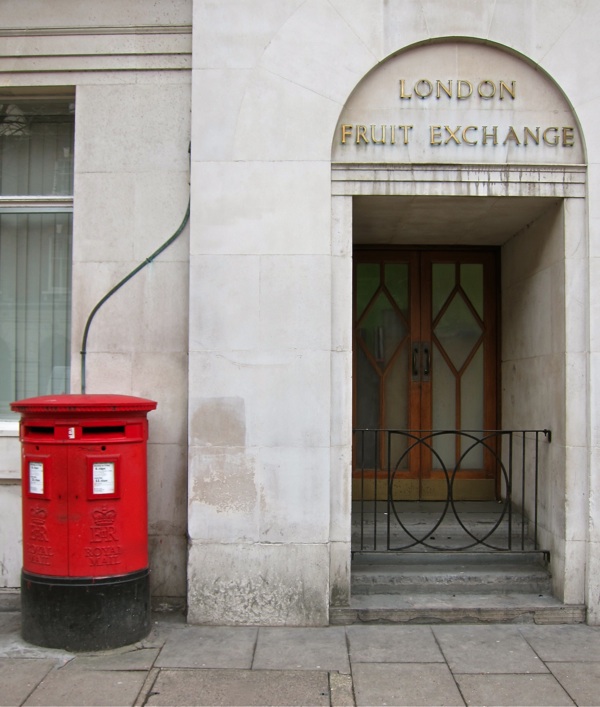
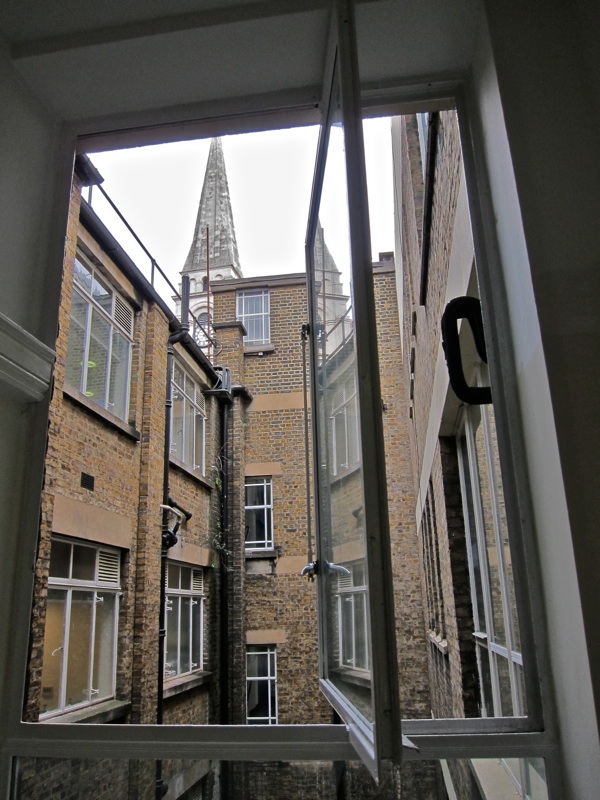
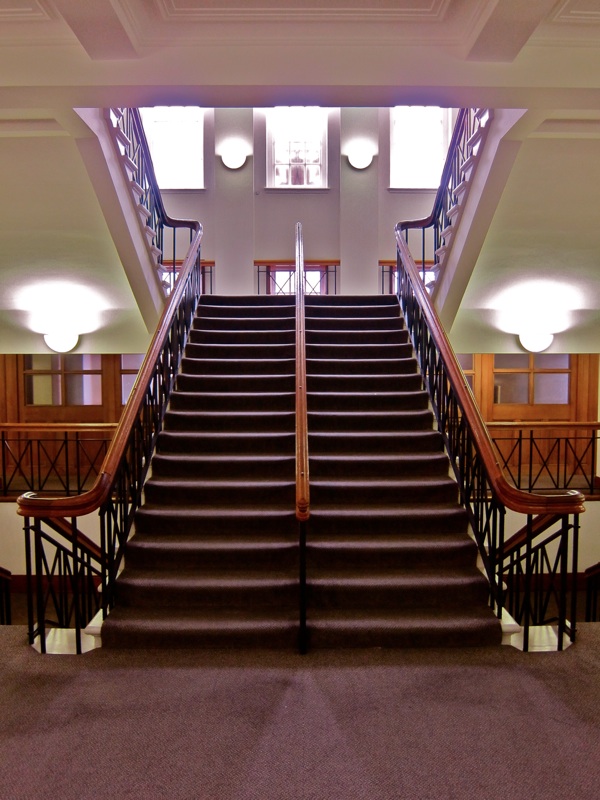

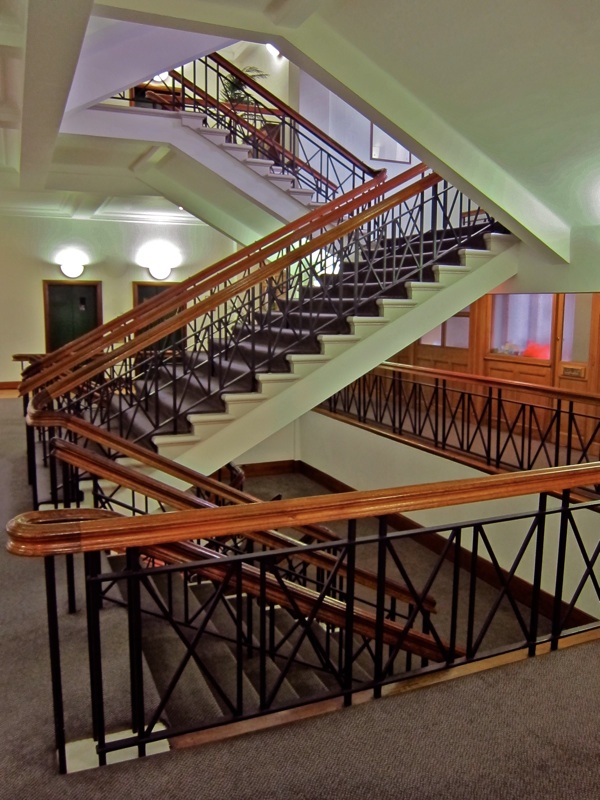
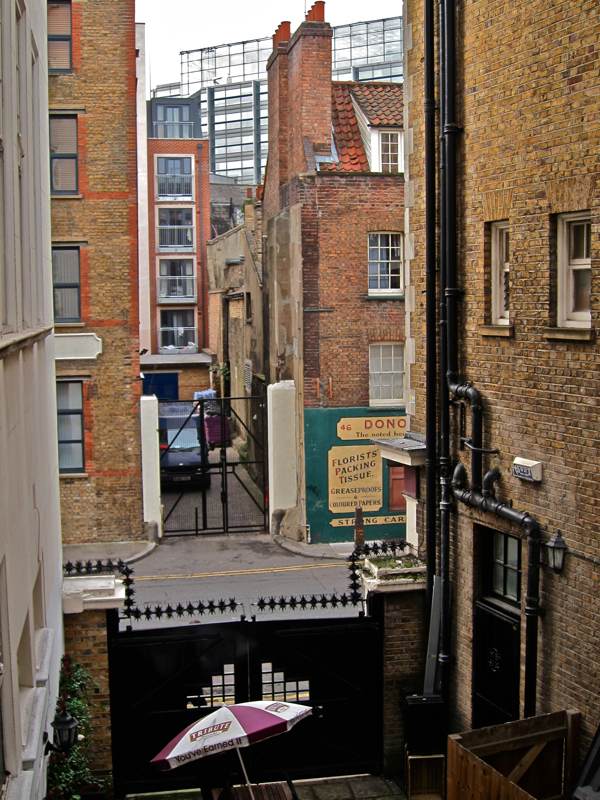

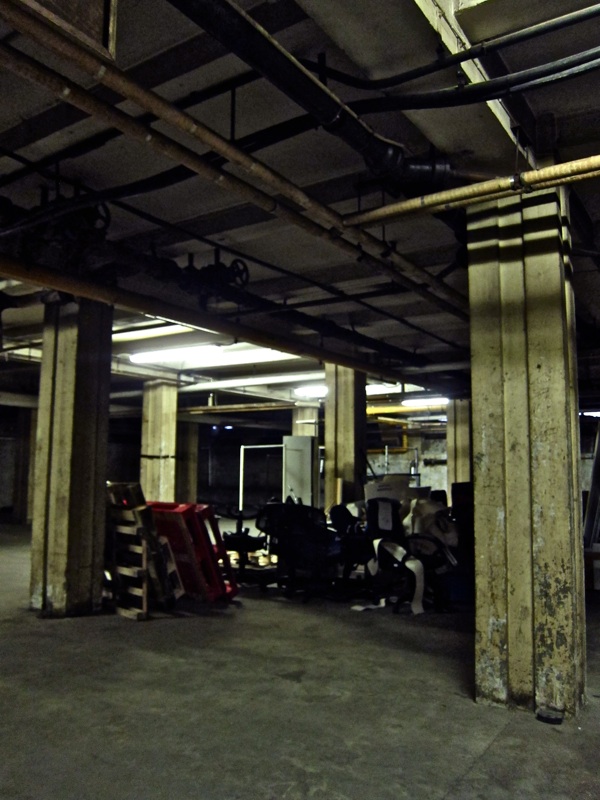



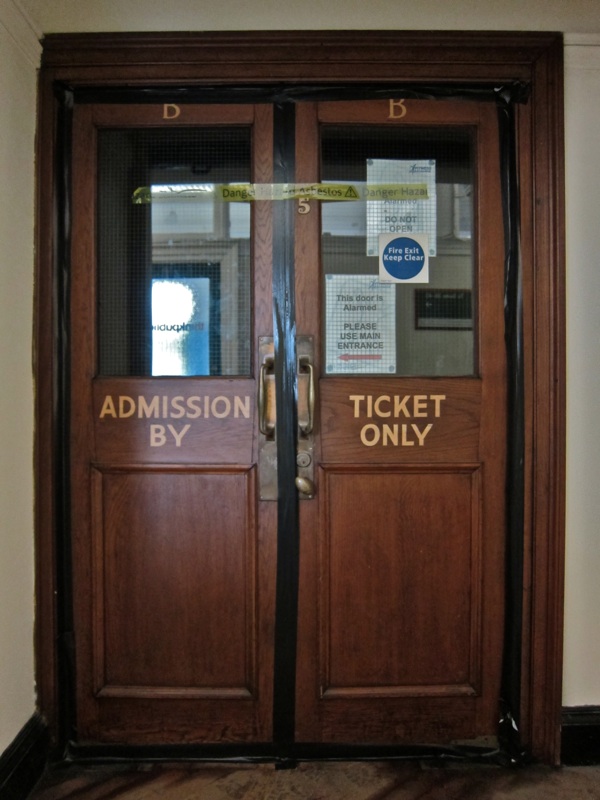
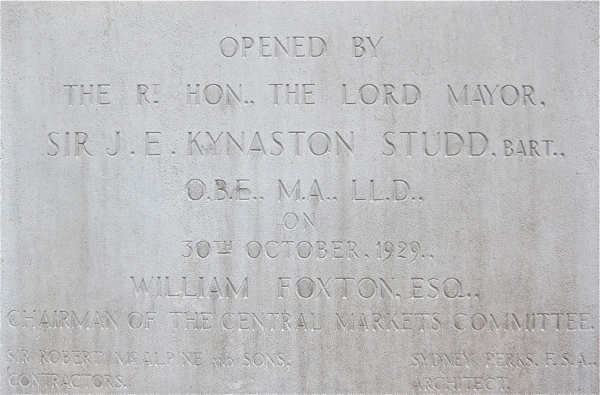








No comments:
Post a Comment